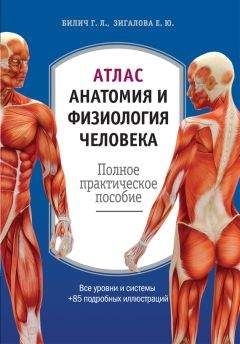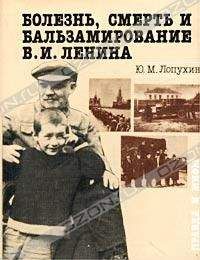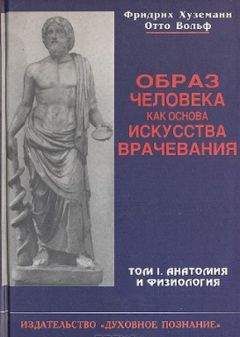Милтон Селигман - Обычные семьи, особые дети
Stehower, J. (1968). The household and family relations of old people. In E. Shames, D. Townsend, D. Wedderbrunn, H. Friis, P. Michoj, & J. Stehower (Eds.), Old people in three industrial societies (pp. 177-226). New York: Atherton.
Stein, R. G. (1983). Hispanic parents' perspectives and participation in their children's special education program: Comparisons by program and race. Learning Disability Quarterly, 6, 432-439.
Stillman, R L., Sabers, D. L., & Redfield, D. L. (1977). Use of trained mothers to teach interviewing skills to first-year medical students: A follow-up study. Pediatrics, 60, 165-169.
Stone, N. W., & Chesney, В. H. (1978). Attachment behaviors in handicapped infants, Mental Retardation, 16, 8-12.
Stoneman, Z., & Berman, R W. (1993). The effects of mental retardation, disability, and illness on sibling relationships. Baltimore: Brookes.
Stoneman, Z., Brody, G. H., Davis, G. H., Crapps, J. M., & Malone, D. M. (1991). Ascribed role relations between children with mental retardation and their younger siblings. American Journal on Mental Retardation, 95, 537-550.
Stonequist, E. V (1937). The marginal man: A study in personality and culture conflict. New York: Scribners.
Stotland, J. (1984, February). Relationship of parents to professionals: A challenge to professionals. Journal of Visual Impairment and Blindness, 69-74.
Streib, G., & Beck, R. (1981). Older families: A decade review. Journal of Marriage and the Family, 42, 937-956.
Strong, P. M. (1979). The ceremonial order of the clinic: Parents, doctors, and medical bureaucracies. London: Routledge & Kegan Paul.
Sudarkasa, N. (1981). Interpreting the African heritage in Afro-American family organization. In H. P. McAdoo (Ed.), Black families (pp. 37-53). Beverly Hills: Sage.
Suelzle, M., & Keenan, V (1981). Changes in family support networks over the life cycle of mentally retarded persons. American Journal of Mental Deficiency, 86, 267-274.
Svarstad, B. L., & Lipton, H. L. (1977). Informing parents about mental retardation: A study of professional communication and parent acceptance. Social Science and Medicine, 11, 645-651.
Tallman, I. (1965). Spousal role differentiation and the socialization of severely retarded children. Journal of Marriage and the Family, 27, 37-42.
Tartar, S. B. (1987). Traumatic head injury: Parental stress, coping style and emotional adjustment. Unpublished doctoral dissertation, University of Pittsburgh.
Telford, G. W., & Sawrey, J. M. (1977). The exceptional individual (3rd ed.). Englewood Cliffs, NJ: Prentice-Hall.
Tew, В., & Lawrence, K. (1975). Mothers, brothers and sisters of patients with spina bifida. Developmental Medicine and Child Neurology, 75 (Suppl. 29), 69-76.
Tew, B. J., Lawrence, K. M., Payne, H., & Rawnsley, K. (1977). Marital stability following the birth of a child with spina bifida. British Journal of Psychiatry, 131, 79-82.
Thibodeau, S. M. (1988). Sibling response to chronic illness: The role of the clinical nurse specialist. Issues in Comprehensive Pediatric Nursing, 11, 17-28.
Tolson, T E J., & Wilson, M. N. (1990). The impact of two– and three-generational black family structure on perceived family climate. Child Development, 61, 416-428.
Travis, G. (1976). Chronic illness in children: Its impact on child and family. Stanford, CA: Stanford University Press.
Trevino, E (1979). Siblings of handicapped children. Social Casework, 60, 488-493.
Tritt, S. G., & Esses, L. M. (1988). Psychological adaptation of siblings of children with chronic medical illness. American Journal of Orthopsychiatry, 58, 211-220.
Trivette, G. M., & Dunst, G. J. (1982). Proactive influences of social support in families of handicapped children. Unpublished manuscript.
Turk, D. С, & Kerns, R. D. (1985). Health, illness and families: A life-span perspective. New York: Wiley.
Turnbull, A. P., Brotherson, M. J., & Summers, J. A. (1985). The impact of deinstitutionalization on families: A family systems approach. In R. H. Bruininks (Ed.), Living and learning in the least restrictive environment (pp. 115-152). Baltimore: Brookes.
Turnbull, A. P., Patterson, J. M., Behr, S. K., Murphy, D. L., Marquis, J. G., & Blue-Banning, M. J. (1993). Cognitive coping, families, and disability. Baltimore: Brookes.
Turnbull, A. P., Summers, J. A., & Brotherson, M. J. (1986). Family life cycle: Theoretical and empirical implications and future directions for families with mentally retarded members. In J. J. Gallagher & P. M. Vietze (Eds.), Families of handicapped persons (pp. 45-65). Baltimore: Brookes.
Turnbull, A. P., & Turnbull, H. R. (1986). Families, professionals, and exceptionality. Columbus, OH: Merrill.
Turnbull, A. P., & Turnbull, H. R. (1990). Families, professionals, and exceptionality (2nd ed.). Columbus, OH: Merrill.
Turnbull, A. R, & Turnbull, H. R., Ill (in press). An analysis of self-determination within a culturally responsive family systems perspective: Balancing the family mobile. In J. Sowers (Ed.), Making our way: Promoting self-competence among children and youth with disabilities. Baltimore: Brookes.
Turnbull, H. R., & Turnbull, A. P. (Eds.). (1985). Parents speak out: Then and now. Columbus, OH: Merrill.
United States Commission on Civil Rights. (1986). Protection of handicapped newborns: Hearing held in Washington, DC, June 26-21, 1986 (Vol. II). Washington, DC: U.S. Government Printing Office.
University of Pittsburgh Office of Child Development. (1991). Black families: An inquiry into the issues. Developments, 5(1), 5-8.
Upshur, С. C. (1982). Respite care for mentally retarded and other disabled populations: Program models and family needs. Mental Retardation, 20, 2-6.
Upshur, С. C. (1991). Families and the community service maze. In M. Seligman (Ed.), The family with a handicapped child [2nd ed., pp. 91-118). Boston: Allyn & Bacon.
Vadasy, P. F (1986). Single mothers: Asocial phenomenon and population in need. In R. R. Fewell & P. F Vadasy (Eds.), Families of handicapped children (pp. 221-249). Austin, Texas: Pro-Ed.
Vadasy, P. F, & Fewell, R. R. (1986). Mothers of deaf-blind children. In R. R. Fewell & R F Vadasy (Eds.), Families of handicapped children (pp. 121-148). Austin, TX: Pro-Ed.
Vadasy, P. Е, Fewell, R. R., & Meyer, D. J. (1986). Grandparents of children with special needs: Insights into their experiences and concerns. Journal of the Division for Early Childhood, 10, 36-44.
Vadasy, R E, Fewell, R. R., Greenberg, M. Т., Desmond, N. L., & Meyer, D. J. (1986). Follow-up evaluation of the effects of involvement in the fathers program. Topics in Early Childhood Education, 6, 16-31.
Vadasy, P. E, Fewell, R. R., Meyer, D. J., & Greenberg, M. T. (1985). Supporting fathers of handicapped young children: Preliminary findings of program effects. Analysis and Intervention in Developmental Disabilities, 5, 125-137.
Varekamp, M. A., Suurmeijer, R, Rosendaal, E R., Dijck, H., Uriends, A., & Briet, E. (1990). Family burden in families with a hemophilic child. Family Systems Medicine, 8, 291-301.
Vasta, R. (1982). Strategies and techniques of child study. New York: Academic Press.
Vincent, L. J., & Salisbury, G. L. (1988). Changing economic and social influences on family involvement. Topics in Early Childhood Special Education, 12, 48-59.
Visher, E., & Visher, J. (1988). Old loyalties new ties: Therapeutic strategies with step families. New York: Brunner/Mazel.
Von Bertalanffy, L. (1968). General systems theory. New York: Braziller.
Voysey, M. (1972). Impression management by parents with disabled children. Journal of Health and Social Behavior, 13, 80-89.
Voysey, M. (1975). A constant burden: The reconstitution of family life. London: Routledge & Kegan Paul.
Waechter, E. H. (1977). Bonding problems of infants with congenital anomalies. Nursing Forum, 16, 229-318.
Waisbren, E. (1980). Parents' reactions after the birth of a developmentally disabled child. American Journal of Mental Deficiency, 84, 345-351.
Waitzkin, H. (1985). Information giving in medical care. Journal of Health and Social Behavior, 26, 81-101.
Waitzman, N. J., Romano, P. S., Scheffler, R. M., & Harris, J. A. (1995, September 22). Morbidity and mortality weekly report. Atlanta: Centers for Disease Control.
Walker, J. H. (1971). Spina bifida – and the parents. Developmental Medicine and Child Neurology, 13, 462-476.
Wallinga, C, Paquio, L., & Skeen, P. (1987). When a brother or sister is ill. Psychology Today, 42, 43.
Walsh, E (1989). The family in later life. In B. Garter & M. McGoldrick (Eds.), The changing family life cycle (2nd ed., pp. 311-332). Needham Heights, MA: Allyn & Bacon.
Wasow, M., & Wilder, L. (1983). Reflections on professionals' attitudes toward the severely mentally retarded and the chronically mentally ill: Implications for parents. Family Therapy, 10, 299-308.
Wasserman, R. (1983). Identifying the counseling needs of the siblings of mentally retarded children. Personnel and Guidance Journal, 61, 622-627.
Watson, R. L., & Midlarsky E. (1979). Reaction of mothers with mentally retarded children: A social perspective. Psychological Reports, 45, 309-310.
Wayman, K. I., Lynch, E. W., & Hanson, M. J. (1991). Home-based early intervention services: Cultural sensitivity in a family systems approach. Topics in Early Childhood Special Education, 10, 56-75.
Weisbren, S. E. (1980). Parents' reactions after the birth of a developmentally disabled child. American Journal of Mental Deficiency, 84, 345-351.
Wendeborn, J. D. (1982). Administrative considerations in treating the Hispanic patient. Clinical Management in Physical Therapy 2, 6-7.
Western Psychiatric Institute and Clinic. (1980). An intruder in the family: Families with cancer [Videotape]. Pittsburgh: University of Pittsburgh.
White, R, Benedict, M. I., Wulff, L., & Kelley, M. (1987). Physical disabilities as risk factors for child maltreatment: A selected review. American Journal of Orthopsychiatry, 57, 93-101.
Wice, В., & Fernandez, H. (1984, October). Meeting the bureaucracy face to face: Parent power in the Philadelphia schools. Exceptional Parent, pp. 36-41.
Wikler, L. (1981). Chronic stresses of families of mentally retarded children. Family Relations, 30, 281-288.
Wilcoxon, A. S. (1987). Grandparents and grandchildren: An often neglected relationship between significant others. Journal of Counseling and Development, 65, 289-290.
Williams, H. В., & Williams, E. (1979). Some aspects of childrearing practices in three minority subcultures in the United States. Journal of Negro Education, 48, 408-418.
Wilton, K., & Barbour, A. (1978). Mother-child interaction in high-risk and contrast preschoolers of low socioeconomic status. Child Development, 49, 1136-1145.
Words, H. Z., & Margolies, J. A. (1955). Parents of children of cerebral palsy. Medical Social Work, 4, 110-120.
Wright, B. A. (1983). Physical disability: A psychosocial approach (2nd ed.). New York: Harper and Row.
Yalom, I. (1975). The theory and practice of group psychotherapy (2nd ed.). New York: Basic Books.
Yalom, I. (1995). The theory and practice of group psychotherapy (4th ed.). New York: Basic Books.
Yee, L. Y (1988). Asian children. Teaching Exceptional Children, 20(4), 49-50.
Young, Y H. (1970). Family and childhood in a southern Negro community. American Anthropologist, 40, 269-288.
Zborowski, M. (1952). Cultural components of response topain. Journal of Social Issues, 8, 16-30.
Zinn, M. В., & Eitzen, D. S. (1993). Diversity in families. New York: HarperCollins.
Zucman, E. (1982). Childhood disability in the family. World Rehabilitation Fund. Monograph No. 14, New York.
Zuk, G. H. (1959). The religious factor and the role of guilt in parental acceptance of the retarded child. American Journal of Mental Deficiency, 64, 139-147.
Zuk, G. H., Miller, R. L., Batrum, J. В., & Kling, F (1961). Maternal acceptance of retarded children: A questionnaire study of attitudes and religious background. Child Development, 32, 525-540.
Примечания
1
Стигма – позор, пятно, клеймо; стигматизирующее отношение – презрительное отношение.
2
Амниоцентез – вид пренатальной диагностики, прокол плодного пузыря с целью получения амниотической (околоплодной) жидкости для выявления возможных наследственных заболеваний плода.
3
Анализ материнской сыворотки – определение биохимических маркеров в материнской сыворотке крови для пренатального скрининга врожденных пороков развития и хромосомной патологии.
4
Законодательные нормы, касающиеся «младенца Доу», были приняты в 1984 г. в ответ на конкретный случай, при котором ребенка с синдромом Дауна, родившегося с непроходимостью пищевода, лишали еды и питья. В законе говорится следующее: «Организации сферы здравоохранения не имеют права, руководствуясь только наличествующим или предполагаемым нарушением физического либо умственного развития младенца, отказывать в лечении или питании младенцу, состояние которого улучшилось бы в результате оказания медицинской помощи или предоставления питания, несмотря на наличие указанного порока развития». Дальнейшие выдержки из законодательства гласят, что «такие соображения, как предполагаемые или фактические или ограниченные потенциальные возможности указанного лица и наличие либо возможное отсутствие общественных ресурсов, не имеют значения». В лечении может быть отказано только в том случае, если заранее известно, что оно будет безрезультатным. (Прим. ред.)




